The feat of the Russian Guard under Kulm
prehistory
After the unsuccessful battle of Dresden (Dresden battle 26-27 August 1813 of the year) The Bohemian army retreated in three columns through the Ore Mountains to Bohemia (the Czech Republic was then called). One part of the Austrian army marched through Tarant to Freiberg (by the eastern road), the other through Dippoldiswalde and Eichwald to Teplice (central road). Russian-Prussian troops under the general command of Field Marshal MB Barclay de Tolly walked through the Don and Tsegist, then along the highway through Peterswalde to Teplice (east route). The occupation by the enemy of both main routes from Dresden, to Pirna and Freiberg, forced the first Austrian column and the Russian-Prussian column to deviate from the directions indicated by it.
Napoleon still 15 (27) August, in order to cut the path of the retreat of the Bohemian army through the mountain valleys, surround and destroy the enemy army, which he planned to break near Dresden, sent a roundabout maneuver through Peterswalde to the Teplits 1-i army building (32 - 35 thousand soldiers, 84 guns). The French emperor also promised Vandam to send the corps of Saint-Cyr and Marmont to help him. If the French troops successfully completed the tasks set by Napoleon, the Allied forces found themselves in a critical situation. The seizure by Vandam of the Greenhouse blocked the Allied forces a narrow path through the Ore Mountains. At the approach of the main forces of Napoleon, the Allied forces, under which the Russian emperor and the Prussian king were stationed, were threatened with encirclement and complete defeat. However, the 10-thousand was in the way of the French corps. a Russian detachment under the command of Count Ostermann-Tolstoy (already during the battle, reinforcements approached him).
In Dippoldiswalde there was a big crowd of troops, artillery, carts, mobile stores. If Napoleon’s army pursued the Bohemian army, a great disaster could have happened. But the French army did not pursue the allies. The French, on 4 days, were on the march, then they fought for two days, in inclement weather. True, the Allied forces did not shine with freshness, especially the Austrians, who had serious problems with provisions and soldiers' uniforms. Rain and bad roads slowed down the Allied forces.
In addition, Napoleon made a mistake. Initially, he wanted to take advantage of the victory at Dresden. August 28 Murat, Lotur-Mébourg and Victor moved to Freiberg, Marmont in Dippoldiswalde, Saint-Cyr to Don, and then Maxin, the guards arrived in Pirnu. Thus, Napoleon with the guard on the evening of August 28 was at Pirma, 30 versts from Kulm. The next day, he came to the aid of Wandam and block the road to the allies, who stretched along narrow mountain roads. From the rear, the Allied forces would have crammed the forces of Murat, Marmont, and Saint-Cyr. However, the next day, the Old Guard received orders to return to Dresden. Some researchers attribute this decision to the illness of the French Emperor. Others talk about the impact of news of the defeat of Udino near Berlin (The end of the 1813 truce of the year. Battle of Grosberen 23 August 1813 of the year.) and the defeat of the McDonald group on Katsbach. These messages attracted all the attention of the French ruler to the direction of Berlin and Silesia, from which enemy armies could appear. Therefore, the Old Guard with Napoleon returned to Dresden, the Young Guard received orders to remain in Pirna. The other corps, though continued to pursue, but did it hesitantly, limiting themselves to capturing the laggards (most of the Austrians) and abandoned carts. Moreover, the corps of Vandam, which was located on the most important and dangerous direction, did not receive any specific instructions. This doomed the 1 corps to defeat.
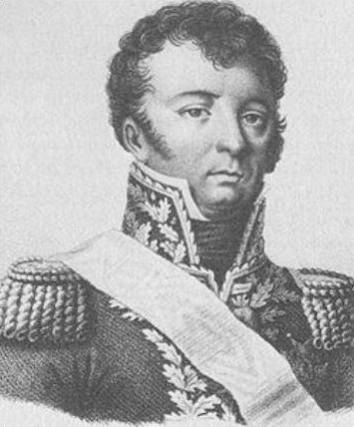
Dominic Joseph Rene Wandam (1770 - 1830).
Battle
The Osterman-Tolstoy Consolidated Detachment consisted of: 1-I Guards Division under the command of Major-General Grigory Vladimirovich Rosen (Preobrazhensky, Semenovsky, Izmaylovsky, Leib-Guards Chasseurs Regiment), several regiments of 2 2nd Army Corps Yevgeny Würteme, and a man, and a number of XNUMX 2nd Army Corps Yevgeny Würteme man in the shelves of the Yevgeny Würteme regiment of the Yevgeny Guernsey Regiment Rosen (Preobrazhensky, Semenovskiy, Izmaylovsky, Life Guards Regiment) Gelfreich. Osterman was ordered not to allow French troops to leave the mountain gorges.
The first skirmishes occurred 28 August. The fighting took place near the villages of Gross-Kotty, Krichwitz, Kohlberg. While the guard marched towards Gisgübel, under the nose of the French corps, part of the detachment's forces attacked the enemy. The Wolf brigade (Murom and Chernigov regiments) overturned the enemy for Krychvits, where the Russian hands lasted until the 16 hours. The Knorring detachment, with the support of the leyb rangers battalion and the semenov battalion, under the personal command of Yermolov attacked Kolberg. The French had no data on the number of opposing enemy forces, exaggerating their number. Vandam was misled by the determination of the actions of the Russian squad. Further advancement of the detachment was accompanied by constant fights with the French troops. So, Gusgübel’s Guards had to clear the road from the French riflemen.
The course of the battle 17 (29) August. At dawn, the French troops pushed the Ostermann-Tolstoi detachment from Kulm to the Greenhouse. Russian troops occupied the defense south-west of Kulma near the village of Pristen, lined up in two lines. Osterman focused his main efforts on his left flank, along the Kulm-Teplice road. On the right flank, Russian forces settled down hilly terrain.
Wandam hoping that only one appearance of the forces of his corps would cause the Russians to retreat and, in a hurry to occupy Teplits, did not wait for the concentration of all forces and brought the units into battle as they stayed. The first to attack was the Reuss brigade (6 battalions). Around noon, she attacked the Russian positions near the village of Straden. However, the enemy's attack was repelled, and the commander of the French brigade, Prince Reissky, was killed. Yermolov supported the legeb rangers of the Semenov regiment, and the French backed up. But at this moment the 42-I division of Mouton-Duvernet (9 battalions) entered against the Russian left wing. Russian shooters pushed out of the woods at Straden. Wandam deployed the Corbino cavalry (20 squadrons) and sent from Kulm, on the battle side of the highway, the Gobrecht brigade (8 squadrons). At about 14 hours came Phillip's division (14 battalions). Vandam, hoping to resolve the matter with one decisive blow, sent one regiment to Straden, and three to Pristin. The Russian arrows left Straden, but when two French battalions, carelessly, rushed to pursue them, they were surrounded in the forest and for the most part killed, or captured. It was a fierce battle, the troops converged in hand-to-hand combat. Semenov regiment lost to half of its composition.
Pristen changed hands several times. The French pushed the 2 corps out of it. But Prince Shakhovsky with the 4 th Chasseurs, Revel, and Minsk regiments recaptured the settlement. The French, suffering heavy losses from the fire of Russian artillery, again moved to the attack. Wuerttemberg asked for reinforcements. Tolstoy had only three battalions in reserve (two from the Izmailovsky regiment and one from Preobrazhensky). Reserve hit the enemy. The French were rejected. But Russian troops suffered heavy losses. The commander of the Izmailovo Life Guards Regiment, Matvey Khrapovitsky was seriously wounded.
At this time, Tolstoy's detachment received reinforcements - the 1-I Cuirassier Division approached under the command of Major-General Nikolai Ivanovich Depreradovich. Two cuirassiers of the regiment, the Kavalergardsky and the Horsemen, occupied the defense on the right flank, where the sides divided the ravine, and the Life Guards Ulansky and Dragoonsky regiments turned on the left flank.
At about 17 hours, French troops attacked the left flank of the Russian troops in two columns. The French broke through the Russian defenses, seized Pristen, but were suspended by a bayonet attack by the battalion of the Semenov regiment. Semenovtsy beat off the guns captured by the French battery. At this point, the French were attacked by the Life Guards of the Ulansky and Dragoon regiments under the command of Ivan Dibich. One French column was able to hide in the woods, another entered the battle and was defeated. Only prisoners were taken to 500 people. On this active hostilities that day ended. The Russian detachment suffered great losses - up to 6 thousand people, but withstood the blow of the enemy, eliminating the threat of the environment and the defeat of the retreating Allied army.
The battle was stubborn. Both sides showed courage and courage. Osterman-Tolstoy was wounded, his left arm, broken by the nucleus, was cut off. He replied to the words of sympathy: “It is very nice to be wounded for the Fatherland, and as for the left hand, I have the right hand, which I need for a sign of the cross, a sign of faith in God, on which I believe all my hope.” The command of the troops assumed the general Alexey Ermolov, the commander of the 5-th Guards Corps. Ermolov perfectly fulfilled the task. The Russian Guardsmen with their heroic self-sacrifice saved the whole army. According to Denis Davydov, “the famous Kulm battle, which on the first day of this great battle, belonged primarily to A. Yermolov, serves as one of the decorations of the military field of this general.” No wonder that he was awarded the Order of St. Alexander Nevsky, and the Prussian king handed him the cross of the Red Eagle 1-th degree.
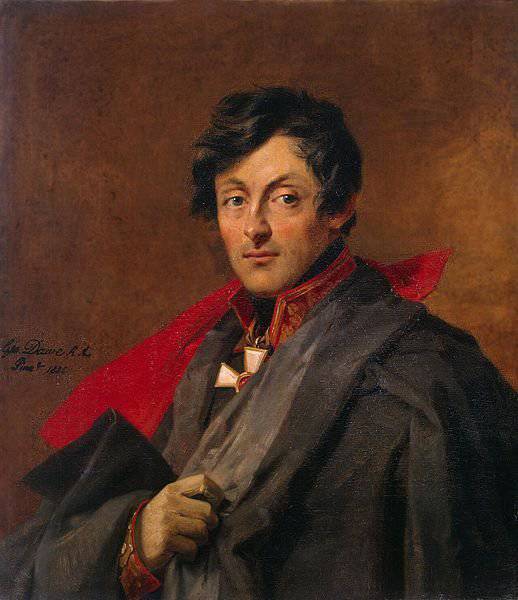
Alexander Ivanovich Osterman-Tolstoy (1770 / 72 - 1857).
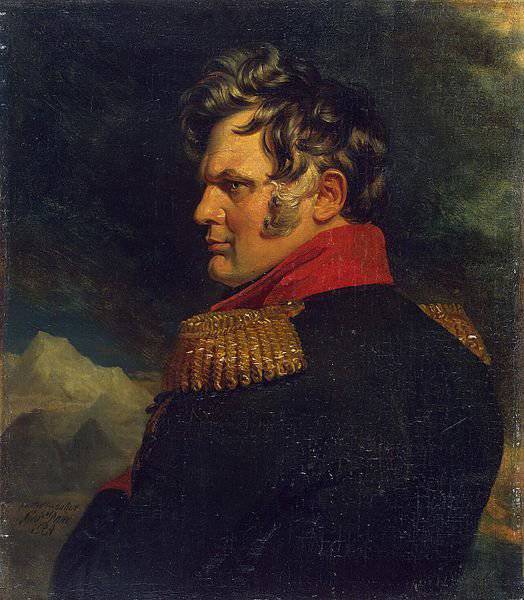
Alexey Petrovich Ermolov (1777 - 1861).
In the evening, Russian troops of the main army began to approach Teplits under the command of Barclay de Tolly. At night, Yermolov's detachment was reinforced by the 2-th Kirasir division and part of the 3-th infantry corps. They replaced the exsanguinated and exhausted units of the 1-th Guards Division exhausted by the battle. Mikhail Andreevich Miloradovich, and then Barclay de Tolly, assumed overall command. Around the same time, Prussian troops went to the rear of the French. This was not done on purpose and it was a surprise for both the Prussians and the French. Vandam even initially considered it to be the troops of Saint-Cyr. The total number of Allied forces in the area of the battle increased to 50-60 thousand people.
The course of the battle. 18 (30) August. Barclay on the left flank in the first line put the 1-th Grenadier Division under the command of Nikolai Raevsky and the brigade of Major-General Dmitry Pyshnitsky, in the second line was located the Austrian brigade of Prince of Hesse-Homburg. The general leadership of the left flank was exercised by Prince Lieutenant-General Dmitry Golitsyn. In the center in the first line was the 2 corps of Eugene of Württemberg and the Gelfreich detachment, in the second line there were the 2-I Guards Infantry Division of Major General Ivan Udom, the Guards cavalry and the Austrian cuirassiers. It also housed the 3-I cuirassier division of Ilya Duki. General command carried Miloradovich. On the right wing were the cavalry detachment of Major General Karl Knorring (seriously injured in this battle), the Austrian divisions I. Colloredo and F. Bianchi. The right flank was supposed to bypass the enemy. The right flank was led by the Austrian commander Colloredo.
On this day, French troops continued to attack the left flank of the Allied forces. Russian troops struck on both flanks, while Austrian troops attempted to bypass the left flank of the French corps. By noon, Prussian troops had gone to the rear of the French. Wandam was forced to turn part of his forces against Kleist and counterattacked him. Prussian troops were driven back a few kilometers to the north, but only the cavalry brigade of General J. Corbino could break through the corridor and leave. The French, attacked from three directions, were crushed and broken. By 13 hours, French troops began to surrender. Prior to 12, thousands of people, along with the commander and all artillery (80 guns), fell into the hands of the Allies. Others fled through the forests.
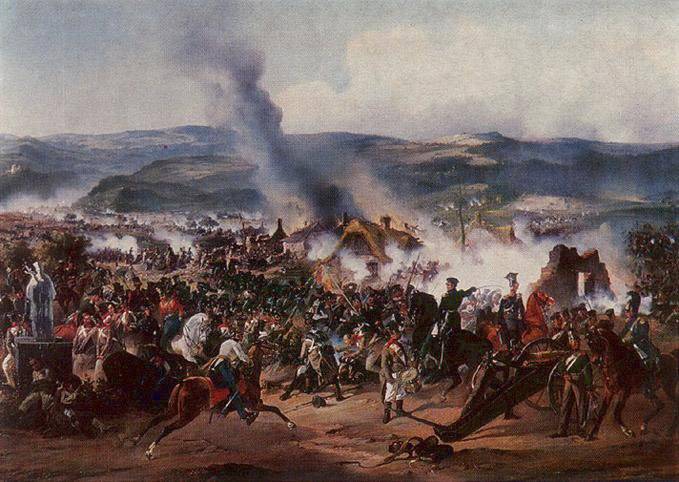
Battle of Kulm 17-18 August 1813 of the year. A. Kotzebue.
Results
The allied army, thanks to the courage and sacrifice of thousands of Russian soldiers, escaped encirclement. The threat of a possible military catastrophe was eliminated. The French 1 Corps under the command of Dominique Vandam was completely crushed. Napoleon Bonaparte had to re-form the corps, but in fact the 1 corps did not regain its combat capability until the end of the campaign. In the battle of Kulm, the French troops lost up to 5 thousand killed, all artillery and convoy. The prisoners were about 12 thousand people. The total losses of the French corps are estimated at 17-22 thousand people, some soldiers fled through the forests, and later joined Napoleon's army. Allied forces lost about 10 thousand people, of which - 7 thousand Russian. Most of the losses occurred on the first day of the battle. Guardsmen suffered significant losses: the Semenov regiment lost 900 people killed and wounded, that is, half of the payroll, the Izmailovsky regiment - 551 people, etc.
For Alexander, this was the first victory in which he was present, so she became special to him. According to the adjutant of Russian sovereign Alexander Mikhailovsky-Danilevsky, who later became a prominent military historian, "The battle of Kulma was always a favorite subject of his memory." Osterman-Tolstoy was awarded the Order of St.. George 2 degree and the Prussian Great Iron Cross. Russian guardsmen were marked with the Iron Cross Cross (Kulma Cross). Many generals who participated in the battle were promoted: Osterman-Tolstoy became Adjutant General Alexander I, Rosen and Depreradovich were promoted to lieutenant general. Russian tsar granted by 2 rub. to the soldiers. Guards squadrons were assigned three soldiers of St. George's cross, each of which should have been awarded to those "who, by the choice of their congregations, will be elected worthy of receiving." In Austria, in honor of the victory at Kulm, a monument was erected, and a medal was struck with the inscription: "To the courage of the Russian Guard at Kulm."
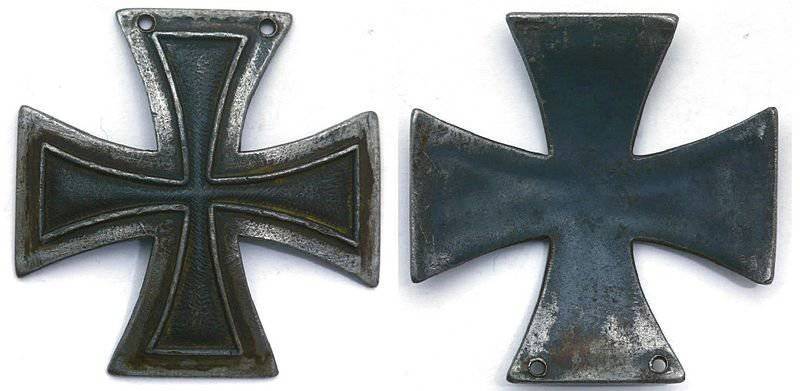
Soldier's Kulma cross.
Victory at Kulm, as well as news about Victoria near Katsbach (Battle of Katzbach), contributed to raising the morale of the Allied army, gave the actions of the allies confidence and activity, and strengthened the anti-French coalition. The Trachenberg plan was implemented - the Allied armies smashed Napoleon’s army in pieces. Given the depletion of France’s human resources, Napoleon faced the problem of reserves. The numerical advantage of the allied forces was becoming more tangible.
Monument at the site of the Battle of Kulm.
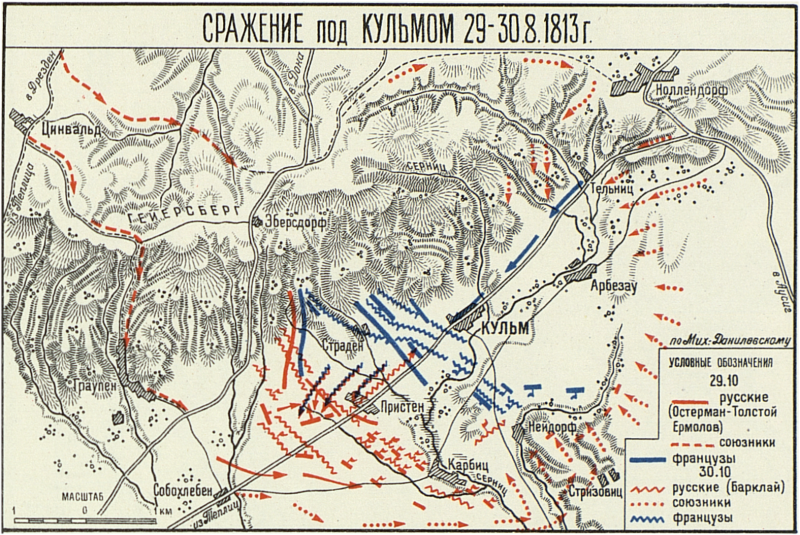
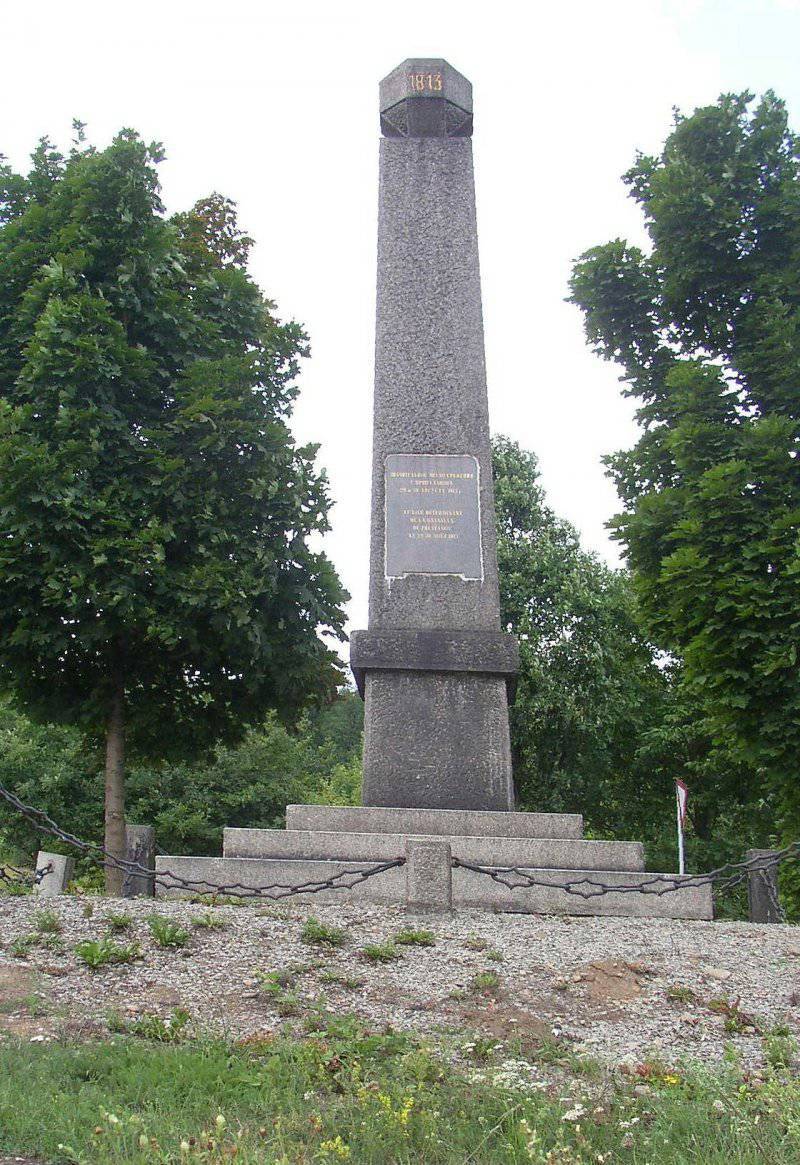
Information